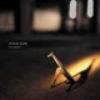 Whilerecording his second full-length, Kleine felt inspired to createseemingly with whatever he found lying about, and it has reinformed hismusic in a whole new light. The simple beauty of his other works ishere still, but augmented by a new dancefloor sensibility, and thestrength and assurance of years behind the boards and with aninstrument in hand. From the first song, "Home," the energy can befelt, as the album starts off with gentle keys and sounds beforeexploding into full boogie shuffle. The beats are never stale, soundinglike they were created from the ground up instead of from samples, andthe density of the sound is undeniable, with new sounds popping upevery time I listen; and that's just the first track. From there, it'son to the almost indie rock presence of "Stations," where the guitarand drums are joined by an otherworldly ringing and keyboards. Kleinecomplicates things more and more as the album progresses, getting moreand more creative with the rhythms and the tones he lays on top.Contrasting that is the all-out rock nature of songs like"Ghostwriting," that reinvigorate more than new rock bands could everhope to. Kleine took eighteen months to finish the record, and theeffort shows in the production, even though there is no real congruityto the songs as a whole. Maybe that's planned, or maybe that's just howit came out, but it's not a detractor: each song is a different storyor ghost and exists just fine on its own, lasting just as long or shortas it needs to. Real Ghosts is a tribute to Kleine's influencesand a reaction to the music of his past all at once, and as such it isthe boldest musical statement he's ever made.
Whilerecording his second full-length, Kleine felt inspired to createseemingly with whatever he found lying about, and it has reinformed hismusic in a whole new light. The simple beauty of his other works ishere still, but augmented by a new dancefloor sensibility, and thestrength and assurance of years behind the boards and with aninstrument in hand. From the first song, "Home," the energy can befelt, as the album starts off with gentle keys and sounds beforeexploding into full boogie shuffle. The beats are never stale, soundinglike they were created from the ground up instead of from samples, andthe density of the sound is undeniable, with new sounds popping upevery time I listen; and that's just the first track. From there, it'son to the almost indie rock presence of "Stations," where the guitarand drums are joined by an otherworldly ringing and keyboards. Kleinecomplicates things more and more as the album progresses, getting moreand more creative with the rhythms and the tones he lays on top.Contrasting that is the all-out rock nature of songs like"Ghostwriting," that reinvigorate more than new rock bands could everhope to. Kleine took eighteen months to finish the record, and theeffort shows in the production, even though there is no real congruityto the songs as a whole. Maybe that's planned, or maybe that's just howit came out, but it's not a detractor: each song is a different storyor ghost and exists just fine on its own, lasting just as long or shortas it needs to. Real Ghosts is a tribute to Kleine's influencesand a reaction to the music of his past all at once, and as such it isthe boldest musical statement he's ever made.samples:


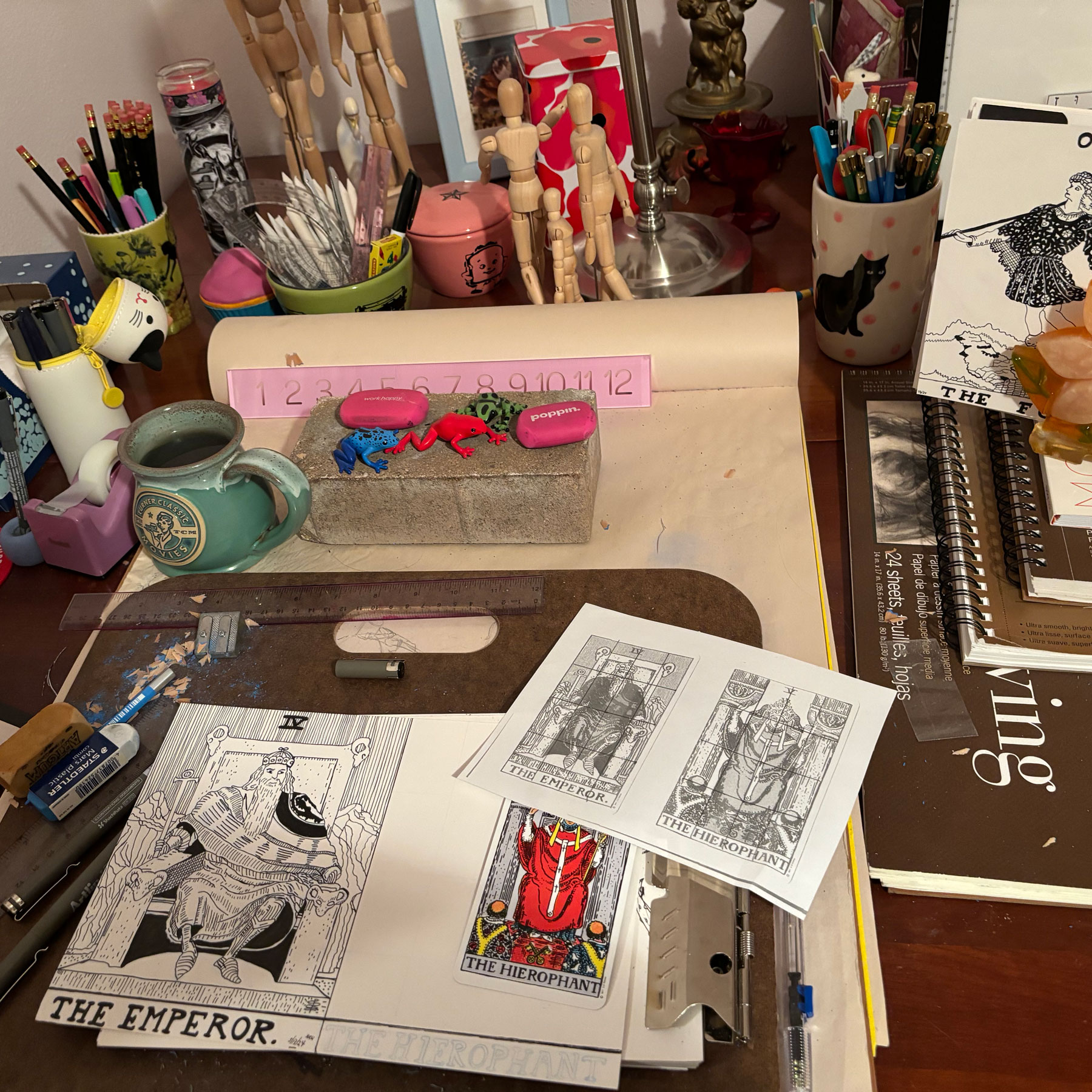
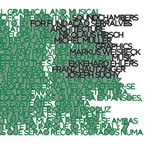 This is Staubgold's second architecturally-oriented release, the first being To Rococo Rot's Kolner Brett, a disc which set about creating a kind of audio simulation of Cologne's Kolner Brett building, situating tracks within a quasi-geometric framework and streamlining the group's austere sound into a series of registers meant to represent different parts of the biulding. Soundchambers is different, more of a commemoration or a traditional response piece than To Rococo's stylized production.
This is Staubgold's second architecturally-oriented release, the first being To Rococo Rot's Kolner Brett, a disc which set about creating a kind of audio simulation of Cologne's Kolner Brett building, situating tracks within a quasi-geometric framework and streamlining the group's austere sound into a series of registers meant to represent different parts of the biulding. Soundchambers is different, more of a commemoration or a traditional response piece than To Rococo's stylized production.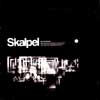 Ninja Tune has strayed away from the things that worked for it ahandful of years ago and as such, it hasn't been a label I've followedmuch since the heyday of Dj Vadim and Amon Tobin. Their new signing isa Polish act called Skalpel whose name conjures much more dire imagesthan their music, but works as a reference to the idea of surgicallycutting records together. Taking samples and bits from Polish jazzrecords and recombining them into new tracks, Skalpel do what so manyhave done before them, but with an amazing amount of precision andcare. The songs on their self-titled debut are mostly laid-back, mutedarrangements of horns and upright bass flowing effortlessly over funkydrums and the occassional hint of exotica. Polish Jazz records from the60's and 70's make up the bulk if not all of the source material,giving the album a steady, cohesive sound that rarely changes timbresenough to alert the listener that the record is made up of samples.Upon first listen, it all sounded a little too familiar as others likeKruder & Dorfmeister have travelled similar roads before. However,Skalpel bring a level of refined sophistication to the game that makesthe album something worth putting on again and again. Loops don't justrepeat here, they are changed and arranged organically so thateverything has the feel of a live band playing over some vinyl surfacenoise. The cheeky samples about dancing all night to jazz and playingPolish records are to be expected, but those are the only signs thatthis music is a conscious decendant of the jazz-record pillaging scene.The rest of the record plays as an homage to martinis and the dapperyoung people who drink them, and to the wonderful history of Polishjazz of which most people who hear this record will have noforeknowledge. While it's not a groundbreaking technical achievement,the production is seamless and ultra-smooth making this a perfectchill-out record or post-modern bachelor pad soundtrack. The disc alsoincludes three short films arranged to tracks on the album that helpround out the presentation. Their stark black and white imageryflickers and reminds me of hep cats in tuxedos and of the fondfalse-nostalgia for a bygone time that afflicts those of us who werenever alive to experience the things we see only in pre-color images.
Ninja Tune has strayed away from the things that worked for it ahandful of years ago and as such, it hasn't been a label I've followedmuch since the heyday of Dj Vadim and Amon Tobin. Their new signing isa Polish act called Skalpel whose name conjures much more dire imagesthan their music, but works as a reference to the idea of surgicallycutting records together. Taking samples and bits from Polish jazzrecords and recombining them into new tracks, Skalpel do what so manyhave done before them, but with an amazing amount of precision andcare. The songs on their self-titled debut are mostly laid-back, mutedarrangements of horns and upright bass flowing effortlessly over funkydrums and the occassional hint of exotica. Polish Jazz records from the60's and 70's make up the bulk if not all of the source material,giving the album a steady, cohesive sound that rarely changes timbresenough to alert the listener that the record is made up of samples.Upon first listen, it all sounded a little too familiar as others likeKruder & Dorfmeister have travelled similar roads before. However,Skalpel bring a level of refined sophistication to the game that makesthe album something worth putting on again and again. Loops don't justrepeat here, they are changed and arranged organically so thateverything has the feel of a live band playing over some vinyl surfacenoise. The cheeky samples about dancing all night to jazz and playingPolish records are to be expected, but those are the only signs thatthis music is a conscious decendant of the jazz-record pillaging scene.The rest of the record plays as an homage to martinis and the dapperyoung people who drink them, and to the wonderful history of Polishjazz of which most people who hear this record will have noforeknowledge. While it's not a groundbreaking technical achievement,the production is seamless and ultra-smooth making this a perfectchill-out record or post-modern bachelor pad soundtrack. The disc alsoincludes three short films arranged to tracks on the album that helpround out the presentation. Their stark black and white imageryflickers and reminds me of hep cats in tuxedos and of the fondfalse-nostalgia for a bygone time that afflicts those of us who werenever alive to experience the things we see only in pre-color images.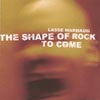 The press release calls it an assembled "history of extreme music,"covering death and black metals, free jazz, VU/Swans guitar walls, andthe power electronics spectrum. And while the cheeky title reiteratesMarhaug's impossible ambitions, it issafe to say that this disc represents one of the Norweigennoisemaster's most unrelenting works yet. As half of Jazzkammer and afrequent collaborator with noisemakers from across the globe, Marhaughas affixed his stamp of curdled feedback and precise digital doctoringto the range of experimental musics, from Jazzkammer's irreduciblepinprick landscapes to Maja Ratkje's operatic abstractions and on intothe dark densities of Merzbow and Kevin Drumm. The work of the lattertwo is where The Shape of Rock finds closest comparison.Consistent with his recent live shows, Marhaug explores the limits ofguitar feedback here, forcing shards of low-end click and hum throughrows of screeching effects and into the computer where things arereassembled into grainy staccato pulsings and writhing pools of sludge.Titles like "Sleeper" and "Magmadiver" point to the legacy of Norway'sblack metal scene; however, as far as audible similarity is concerned,other examples of electronic music paying homage to metal (like COH's Iron or any of Drumm's recent releases) come closer. For all of its excess, The Shape of Rockhangs onto a certain amount of the crisp, cool atmosphere thatcharacterizes much of the artist's work and begs to be associated withhis Nordic roots. Rather than peaking with dramatic transitions intorandom, deconstructive meltdown, the tracks climax with effectiveregroupings, organizing into thick laths of sound more likely toconjure images of looming, night-lit skyscrapers than Gothic ruins.Marhaug often exploits the digital foundation of each piece by guidingthe bulk of certain tracks into stuttering 'skip' patterns, a techniquethat works with the science fiction feel of the disc. Overall this is asolid addition to the catalog of one of Norway's most prolific andsuccessful noisemen; it is also one of his surprisingly few soloreleases, as good an entry point as any.
The press release calls it an assembled "history of extreme music,"covering death and black metals, free jazz, VU/Swans guitar walls, andthe power electronics spectrum. And while the cheeky title reiteratesMarhaug's impossible ambitions, it issafe to say that this disc represents one of the Norweigennoisemaster's most unrelenting works yet. As half of Jazzkammer and afrequent collaborator with noisemakers from across the globe, Marhaughas affixed his stamp of curdled feedback and precise digital doctoringto the range of experimental musics, from Jazzkammer's irreduciblepinprick landscapes to Maja Ratkje's operatic abstractions and on intothe dark densities of Merzbow and Kevin Drumm. The work of the lattertwo is where The Shape of Rock finds closest comparison.Consistent with his recent live shows, Marhaug explores the limits ofguitar feedback here, forcing shards of low-end click and hum throughrows of screeching effects and into the computer where things arereassembled into grainy staccato pulsings and writhing pools of sludge.Titles like "Sleeper" and "Magmadiver" point to the legacy of Norway'sblack metal scene; however, as far as audible similarity is concerned,other examples of electronic music paying homage to metal (like COH's Iron or any of Drumm's recent releases) come closer. For all of its excess, The Shape of Rockhangs onto a certain amount of the crisp, cool atmosphere thatcharacterizes much of the artist's work and begs to be associated withhis Nordic roots. Rather than peaking with dramatic transitions intorandom, deconstructive meltdown, the tracks climax with effectiveregroupings, organizing into thick laths of sound more likely toconjure images of looming, night-lit skyscrapers than Gothic ruins.Marhaug often exploits the digital foundation of each piece by guidingthe bulk of certain tracks into stuttering 'skip' patterns, a techniquethat works with the science fiction feel of the disc. Overall this is asolid addition to the catalog of one of Norway's most prolific andsuccessful noisemen; it is also one of his surprisingly few soloreleases, as good an entry point as any. Piehead's third offering this year comes from the melodic electronicsolo act, Portland. Those familiar with the pioneering n5md label willprobably recognize the name, if not the sound of Portland, and that'slikely because Portland offers little to call his own on Uprox Detox. While the album charts a path through melancholic, beat-oriented IDM (a label used specifically to illicit memories of Artifical Intelligencecompilations and those who love them) with minor key synth tones andclicky, punchy drums, it ultimately plays as a tribute to those whohave gone before. Every moment of Uprox Detox is predictable,just as every sound coaxed out of the computer has been coaxed outbefore. Portland's pedigree lies firmly in the Warp/Skam family tree,and while this album is a worthwhile addition to a catalog of musicthat follows a certain set of rules, it never strays from those rules.These may not be preset drum and synth patches, but they might as wellbe, as most songs sound as though Portland has called up the "EarlyAutechre Kit" on some softsynth in order to compose. The songs arelikeable, genuinely nice in fact, but they aren't poised to startle orupset anyone, and that seems to be my biggest complaint. When thisstrain of IDM's progenitors took a staid techno formula and fucked withit to build something new, it was a little bit shocking, daring, andweird. Now, those same production tricks are nothing more than ashorthand for the kind of music that is characterized by blocky,condensed Helvetica typography and technologically-minded alternatespelling. Portland has rendered a polite and polished album here, butone that never quite cuts loose the way I wish it would. Uprox Detoxis a fine addition to a collection of otherwise ambiguous records, butI hope that next time he colors more outside of the lines.
Piehead's third offering this year comes from the melodic electronicsolo act, Portland. Those familiar with the pioneering n5md label willprobably recognize the name, if not the sound of Portland, and that'slikely because Portland offers little to call his own on Uprox Detox. While the album charts a path through melancholic, beat-oriented IDM (a label used specifically to illicit memories of Artifical Intelligencecompilations and those who love them) with minor key synth tones andclicky, punchy drums, it ultimately plays as a tribute to those whohave gone before. Every moment of Uprox Detox is predictable,just as every sound coaxed out of the computer has been coaxed outbefore. Portland's pedigree lies firmly in the Warp/Skam family tree,and while this album is a worthwhile addition to a catalog of musicthat follows a certain set of rules, it never strays from those rules.These may not be preset drum and synth patches, but they might as wellbe, as most songs sound as though Portland has called up the "EarlyAutechre Kit" on some softsynth in order to compose. The songs arelikeable, genuinely nice in fact, but they aren't poised to startle orupset anyone, and that seems to be my biggest complaint. When thisstrain of IDM's progenitors took a staid techno formula and fucked withit to build something new, it was a little bit shocking, daring, andweird. Now, those same production tricks are nothing more than ashorthand for the kind of music that is characterized by blocky,condensed Helvetica typography and technologically-minded alternatespelling. Portland has rendered a polite and polished album here, butone that never quite cuts loose the way I wish it would. Uprox Detoxis a fine addition to a collection of otherwise ambiguous records, butI hope that next time he colors more outside of the lines.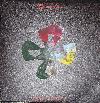 With the Drum MachineEP, the inimitable Peat Bog and the irrepressible Beta-Lactam RingRecords proffer three tracks and twenty-three additional minutes ofmolten mind expansion designed to sink even further into the murky,neo-primitive quagmire first experienced on Earthmonkey'sStapleton-produced debut. Only this time, Mr. Bog has upped the anteand reinvented himself, fully engaging the techno-Prog tendencies onlyglimpsed in his previous work. For better or worse (though certainlyfor the better), Drum Machine sounds like the overfed bastard offspring of The Orb's Adventure Beyond the Ultraworld and Coil's Love's Secret Domain being sexually molested by the Ozric Tentacles' Strangeitude. Where the debut had the stomping Neolithic beats and fuzzy riffage of some mid-70's Kraut-Prog castoff, Drum Machineunashamedly explores the connection between Kraan and The KLF; acid andecstasy; peyote visions and Bedouin trance. "Varana Swing" createsdense, subterranean tunnels connecting Ibiza to the darkest heartAfrica, full of cyclical tribalisms, layers of resonating synthesizersand queasy, dislocated sound effects that creep across the stereochannels. "Hanumantra," in addition to invoking the Be Here Nowimperatives of Baba Ram Dass, also sports a lovely zero-gravity guitarmelody that paints a backdrop for tranced-out group chanting and wavesof mutated cosmic debris. The track inhabits a similar post-Industrialspace-rock territory familiar from mid-to-late period Pink Dots. "BeThat Charge" is certainly the most unorthodox song that Earthmonkey hasyet devised: a whirling dervish of hardcore punk and Middle Easterndance music; The Stooges and a sect of Merkabian desert mystics meetingunder the Saharan moonlight for an all-nighter of hashish-addledslam-dancing. Although it references ethic musics, Earthmonkey's soundis unbounded by its location in spacetime, thrillinglyextra-geographical, suggestive of a world community of switched-onheads stretching from the parched American neo-tribal desert ofBurningman back to the musical primalisms of pre-Babylonian man.
With the Drum MachineEP, the inimitable Peat Bog and the irrepressible Beta-Lactam RingRecords proffer three tracks and twenty-three additional minutes ofmolten mind expansion designed to sink even further into the murky,neo-primitive quagmire first experienced on Earthmonkey'sStapleton-produced debut. Only this time, Mr. Bog has upped the anteand reinvented himself, fully engaging the techno-Prog tendencies onlyglimpsed in his previous work. For better or worse (though certainlyfor the better), Drum Machine sounds like the overfed bastard offspring of The Orb's Adventure Beyond the Ultraworld and Coil's Love's Secret Domain being sexually molested by the Ozric Tentacles' Strangeitude. Where the debut had the stomping Neolithic beats and fuzzy riffage of some mid-70's Kraut-Prog castoff, Drum Machineunashamedly explores the connection between Kraan and The KLF; acid andecstasy; peyote visions and Bedouin trance. "Varana Swing" createsdense, subterranean tunnels connecting Ibiza to the darkest heartAfrica, full of cyclical tribalisms, layers of resonating synthesizersand queasy, dislocated sound effects that creep across the stereochannels. "Hanumantra," in addition to invoking the Be Here Nowimperatives of Baba Ram Dass, also sports a lovely zero-gravity guitarmelody that paints a backdrop for tranced-out group chanting and wavesof mutated cosmic debris. The track inhabits a similar post-Industrialspace-rock territory familiar from mid-to-late period Pink Dots. "BeThat Charge" is certainly the most unorthodox song that Earthmonkey hasyet devised: a whirling dervish of hardcore punk and Middle Easterndance music; The Stooges and a sect of Merkabian desert mystics meetingunder the Saharan moonlight for an all-nighter of hashish-addledslam-dancing. Although it references ethic musics, Earthmonkey's soundis unbounded by its location in spacetime, thrillinglyextra-geographical, suggestive of a world community of switched-onheads stretching from the parched American neo-tribal desert ofBurningman back to the musical primalisms of pre-Babylonian man. 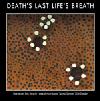 For the mere pittance of $4.00, Beta-Lactam Ring Records is offering the latest in its Beta-Beat Samplerseries. Where previous volumes were quick-and-dirty, minimally packagedreleases compiling and excerpting new and upcoming music on the label, Death's Last Life's Breathcomes in a printed sleeve, and includes a brand new Nurse With Woundtrack exclusive to this compilation. And it's no mere fragmentaryouttake meant to entice the unwary consumer, but an epic 15-minutefantasia of unhinged Stapletonian whimsy. "A Wasted Life of PhagocyteFoot Fetishism" plays like an extended, free-associating riff on theSpace Age Bachelor Pad music for which Stapleton has always professedhis affection. The track goes everywhere, of course, from a concerthall full of toy xylophones to sudden explosions of tabla rhythms,eventually floating up to a dense cloud bank of gently shimmeringkeyboards. If this were the only worthwhile track on Death's Last Life's Breath,it would still be more than worth the price of admission. Luckily, therest of the nearly 80-minute disc is chock full of the kind ofear-opening sonic exploration I've come to expect from the Beta-Lactamlabel, from the lysergic folk of Japan's Green Milk From the PlanetOrange to the eclectic, post-Prog collages of art-rock legends La STPO.Whitelodge's "Masters Within Spaces," excerpted from theirsoon-to-be-released debut, adds a level of post-rock sophistication tothe melancholic, apocalyptic themes explored by esoteric mainstaysCurrent 93 and Death in June. Judging by the distortion-blasted electrogroove of "Comedown," Edward Ka-Spel's new Pieces of 8 promisesto be his best in years. Matt Waldron's irr.app.(ext.) projectcontinues to find new non-corporeal identities in the labyrinthineinner workings of memory and synchronicity, on full display in a trulyunsettling excerpt from the forthcoming Perekluchenie album.Beequeen's "I'm Searching For Field Character" is a perfectlymysterious concoction of drones, dialogue samples and all manner ofindescribable textures. It came down to two choices this week: feed andclothe my Somalian sponsor kid for another month, or use my loosepocket change to buy Death's Last Life's Breath. Sorry about the lack of clean drinking water, N'Dugu, but I'll be happy to burn you a copy of this CD.
For the mere pittance of $4.00, Beta-Lactam Ring Records is offering the latest in its Beta-Beat Samplerseries. Where previous volumes were quick-and-dirty, minimally packagedreleases compiling and excerpting new and upcoming music on the label, Death's Last Life's Breathcomes in a printed sleeve, and includes a brand new Nurse With Woundtrack exclusive to this compilation. And it's no mere fragmentaryouttake meant to entice the unwary consumer, but an epic 15-minutefantasia of unhinged Stapletonian whimsy. "A Wasted Life of PhagocyteFoot Fetishism" plays like an extended, free-associating riff on theSpace Age Bachelor Pad music for which Stapleton has always professedhis affection. The track goes everywhere, of course, from a concerthall full of toy xylophones to sudden explosions of tabla rhythms,eventually floating up to a dense cloud bank of gently shimmeringkeyboards. If this were the only worthwhile track on Death's Last Life's Breath,it would still be more than worth the price of admission. Luckily, therest of the nearly 80-minute disc is chock full of the kind ofear-opening sonic exploration I've come to expect from the Beta-Lactamlabel, from the lysergic folk of Japan's Green Milk From the PlanetOrange to the eclectic, post-Prog collages of art-rock legends La STPO.Whitelodge's "Masters Within Spaces," excerpted from theirsoon-to-be-released debut, adds a level of post-rock sophistication tothe melancholic, apocalyptic themes explored by esoteric mainstaysCurrent 93 and Death in June. Judging by the distortion-blasted electrogroove of "Comedown," Edward Ka-Spel's new Pieces of 8 promisesto be his best in years. Matt Waldron's irr.app.(ext.) projectcontinues to find new non-corporeal identities in the labyrinthineinner workings of memory and synchronicity, on full display in a trulyunsettling excerpt from the forthcoming Perekluchenie album.Beequeen's "I'm Searching For Field Character" is a perfectlymysterious concoction of drones, dialogue samples and all manner ofindescribable textures. It came down to two choices this week: feed andclothe my Somalian sponsor kid for another month, or use my loosepocket change to buy Death's Last Life's Breath. Sorry about the lack of clean drinking water, N'Dugu, but I'll be happy to burn you a copy of this CD. There is no other, more clever way to say that this is by far the mostrefined Animal Collective recording to date. The album showcases astyle that Animal Collective have made all their own over the last fewrecordings: multitracked acoustic guitars, organic rhythms, primitivesound effects, sound samples, and atypical/moderately unpredictablelyrics. This time around, however, the band sound far more competentand confident in their skills as musicians, writers, and producers. Sung Tongsis both relaxed and playful from the beginning through the end. Itopens up with the chugging of "Leaf House," which ends with cat callsand continues on with "Who Could Win a Rabbit," both with a rich, fullsound and chugging with a cheery energy. "The Softest Voice" is thefirst song of the disc of sheer brilliance: drum-free with the layeringof gorgeous acoustic guitars and lush, pretty vocals. It's here whereit's strikingly apparent that the band have honed both their writingand production skills as everything subtly blends in with the morphingghostlike sounds through the middle and to the end. "Winters Love,"however, is probably most reminiscent of the earlier, more calmer"field" recordings, with a springy nostalgic guitar riff and loads ofunburied tape hiss for the first half, and the same riff repeated justcompletely re-interpreted and rearranged throughout the second half.While they sing of winter, for this and nearly all of the disc, I can'tshake the mental images of walking around in a pavement-free field witha blindingly bright sun while girls on bicycles ride by with longblonde hair blowing in slow motion. The epic 12+ minute "VisitingFriends" is like an abstract musical interpretation of the ocean asguitar chords are strummed in repetition, blended, and changed whilebeing multi-layered is similar to the tide coming in, washing over eachprevious wave. Animal Collective are undoubtedly influenced by popmusic, electronics, and psychedelic folk, but to me, their music isneither "folk" nor "free" nor Syd Barrett nor Beach Boys nor IncredibleString Band. It doesn't seem like their goal is to make tunes for thesole sake of easy digestion and widespread appeal, however, thankfullytheir appeal is wide enough to allow them to expand their audiences andevolve in the studio. Sung Tongs might be a little peculiar at first, but over repeated listens, it is creeping into my mental top for the year.
There is no other, more clever way to say that this is by far the mostrefined Animal Collective recording to date. The album showcases astyle that Animal Collective have made all their own over the last fewrecordings: multitracked acoustic guitars, organic rhythms, primitivesound effects, sound samples, and atypical/moderately unpredictablelyrics. This time around, however, the band sound far more competentand confident in their skills as musicians, writers, and producers. Sung Tongsis both relaxed and playful from the beginning through the end. Itopens up with the chugging of "Leaf House," which ends with cat callsand continues on with "Who Could Win a Rabbit," both with a rich, fullsound and chugging with a cheery energy. "The Softest Voice" is thefirst song of the disc of sheer brilliance: drum-free with the layeringof gorgeous acoustic guitars and lush, pretty vocals. It's here whereit's strikingly apparent that the band have honed both their writingand production skills as everything subtly blends in with the morphingghostlike sounds through the middle and to the end. "Winters Love,"however, is probably most reminiscent of the earlier, more calmer"field" recordings, with a springy nostalgic guitar riff and loads ofunburied tape hiss for the first half, and the same riff repeated justcompletely re-interpreted and rearranged throughout the second half.While they sing of winter, for this and nearly all of the disc, I can'tshake the mental images of walking around in a pavement-free field witha blindingly bright sun while girls on bicycles ride by with longblonde hair blowing in slow motion. The epic 12+ minute "VisitingFriends" is like an abstract musical interpretation of the ocean asguitar chords are strummed in repetition, blended, and changed whilebeing multi-layered is similar to the tide coming in, washing over eachprevious wave. Animal Collective are undoubtedly influenced by popmusic, electronics, and psychedelic folk, but to me, their music isneither "folk" nor "free" nor Syd Barrett nor Beach Boys nor IncredibleString Band. It doesn't seem like their goal is to make tunes for thesole sake of easy digestion and widespread appeal, however, thankfullytheir appeal is wide enough to allow them to expand their audiences andevolve in the studio. Sung Tongs might be a little peculiar at first, but over repeated listens, it is creeping into my mental top for the year.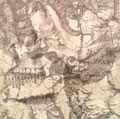 When Piano Magic starts singing about libraries, things are right in the universe once again. By a similar axiom, a good Piano Magic album is marked by its invocation of libraries in one or more songs. Thus, the "The Tollbooth Martrys," the seventh song on The Troubled Sleep Of Piano Magic, is evidence that Magic has produced another splendidly ethereal album. This wasn't the case with the previous album, Writers Without Homes, which was noticeably devoid of libraries.
When Piano Magic starts singing about libraries, things are right in the universe once again. By a similar axiom, a good Piano Magic album is marked by its invocation of libraries in one or more songs. Thus, the "The Tollbooth Martrys," the seventh song on The Troubled Sleep Of Piano Magic, is evidence that Magic has produced another splendidly ethereal album. This wasn't the case with the previous album, Writers Without Homes, which was noticeably devoid of libraries.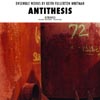 If Playthroughs was a meditation on the blurred landscapes of sleep, Antithesiscomes as a particularization: a focus on the sounds happeningin-between. Things are evidently different the moment "Twin GuitarRhodes Viola Drone (for LaMonte Young)" begins. Though steeped in themystique and subtle caress of electric moans, "Twin Guitar Rhodes..."is blessed with the pure and unaltered sound of piano melodies, choralecho, and unmistakable guitar rhythms. It's incorrect to say that KeithFullerton Whitman's sound is evolving, all of these tracks wererecorded between 1994 and 2002. Whitman is showing us another sidethough: "Obelisk (for Kurt Schwitters)" plays through a labyrinth ofeerie howls, altered vibrations, and percussive rattles. The shaking ofmetal and the rolling of low drums establishes a whole new world ofsounds I've not heard from Whitman before and it sounds fantastic.While the first two tracks had me excited, it's side B that sounds mostawe-inspiring. "Rhodes Viola Multiple" begins with an oddly phrasedmelody that tiptoes over the rest of the song; it produces the image inmy mind of a small girl dancing in the summer. The background is filledwith sound of spaceships launching into space and cars buzzing by underthe sun - the music begins to hum as a unified whole eventually and thesound drifts off into a haze of bird calls and interdimensional timewarps. "Schnee" comes as the biggest and most welcome surprise. Thetrack begins with the melodic plucking of a guitar underscored by thetribal rhythm of tomtom drums and heavy cymbals. Slowly the buzz andform of an electric guitar climbs over the mass of rhythm and ushersforth smoke and shadowy figures, feeling like, at times, the soul of asnake-charmer. The electric and acoustic guitar struggle with eachother, each establishing a new melody over the last, and all the whiledrum solos trace out the pulse of the struggle. Everything about thisEP is gorgeous. The music is a an excellent treat from Whitman - thesongs reveal a side of his compositional skills I've never heard beforeand they're nothing short of magical.
If Playthroughs was a meditation on the blurred landscapes of sleep, Antithesiscomes as a particularization: a focus on the sounds happeningin-between. Things are evidently different the moment "Twin GuitarRhodes Viola Drone (for LaMonte Young)" begins. Though steeped in themystique and subtle caress of electric moans, "Twin Guitar Rhodes..."is blessed with the pure and unaltered sound of piano melodies, choralecho, and unmistakable guitar rhythms. It's incorrect to say that KeithFullerton Whitman's sound is evolving, all of these tracks wererecorded between 1994 and 2002. Whitman is showing us another sidethough: "Obelisk (for Kurt Schwitters)" plays through a labyrinth ofeerie howls, altered vibrations, and percussive rattles. The shaking ofmetal and the rolling of low drums establishes a whole new world ofsounds I've not heard from Whitman before and it sounds fantastic.While the first two tracks had me excited, it's side B that sounds mostawe-inspiring. "Rhodes Viola Multiple" begins with an oddly phrasedmelody that tiptoes over the rest of the song; it produces the image inmy mind of a small girl dancing in the summer. The background is filledwith sound of spaceships launching into space and cars buzzing by underthe sun - the music begins to hum as a unified whole eventually and thesound drifts off into a haze of bird calls and interdimensional timewarps. "Schnee" comes as the biggest and most welcome surprise. Thetrack begins with the melodic plucking of a guitar underscored by thetribal rhythm of tomtom drums and heavy cymbals. Slowly the buzz andform of an electric guitar climbs over the mass of rhythm and ushersforth smoke and shadowy figures, feeling like, at times, the soul of asnake-charmer. The electric and acoustic guitar struggle with eachother, each establishing a new melody over the last, and all the whiledrum solos trace out the pulse of the struggle. Everything about thisEP is gorgeous. The music is a an excellent treat from Whitman - thesongs reveal a side of his compositional skills I've never heard beforeand they're nothing short of magical. 
